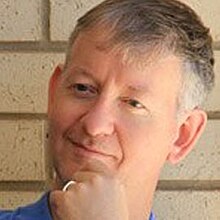|
Peter Gill (chemist)
Peter Malcolm Wallace Gill (born 9 November 1962)[1] is a New Zealand theoretical and computational chemist known for his contribution to density functional theory (DFT). He is an early and main contributor to the computational chemistry software Q-Chem and was the president of the company during 1998–2013. He is especially known for developing the PRISM algorithm for evaluating two-electron integrals and linear-scaling DFT, as well as self-consistent field method for excited state electronic structure.[2][3] Education and careerGill was born in Auckland and received his BSc in 1983 and MSc in 1984 from the University of Auckland.[1] He received a PhD in 1988 from the Australian National University under the supervision of Leo Radom. During this time, he investigated hemi-bonding and the convergence of perturbation theory in quantum chemistry.[3][4] After graduation, he conducted postdoctoral work with John Pople at Carnegie Mellon University from 1988 to 1993. Following this stint, Gill accepted a lectureship at Massey University in 1993. He became a lecturer at the University of Cambridge in 1996. In 1999, Gill became the inaugural chair of theoretical chemistry at the University of Nottingham. He moved to Australia and became a professor at the Australian National University in 2004 and later moved to the University of Sydney in 2019 as the Schofield Chair in Theoretical Chemistry.[3] In 2001, Gill wrote an essay pronouncing the demise of density functional theory thanks to the rise of hybrid functionals for exchange interactions between electrons.[5][6] Honors and awardsGill is the president of the World Association of Theoretical and Computational Chemists (WATOC) and received the Dirac Medal in 1999[7] and the Schrödinger Medal in 2011 from WATOC.[1] In 2013, Gill received the Fukui Medal from APATCC. [1] Gill was elected a Fellow of the Australian Academy of Science in 2014[2] and received the David Craig Medal from the Australian Academy of Science in 2019.[8] In 2015 Gill was inducted to the International Academy of Quantum Molecular Science.[9] References
|
||||||||||||||||||||
